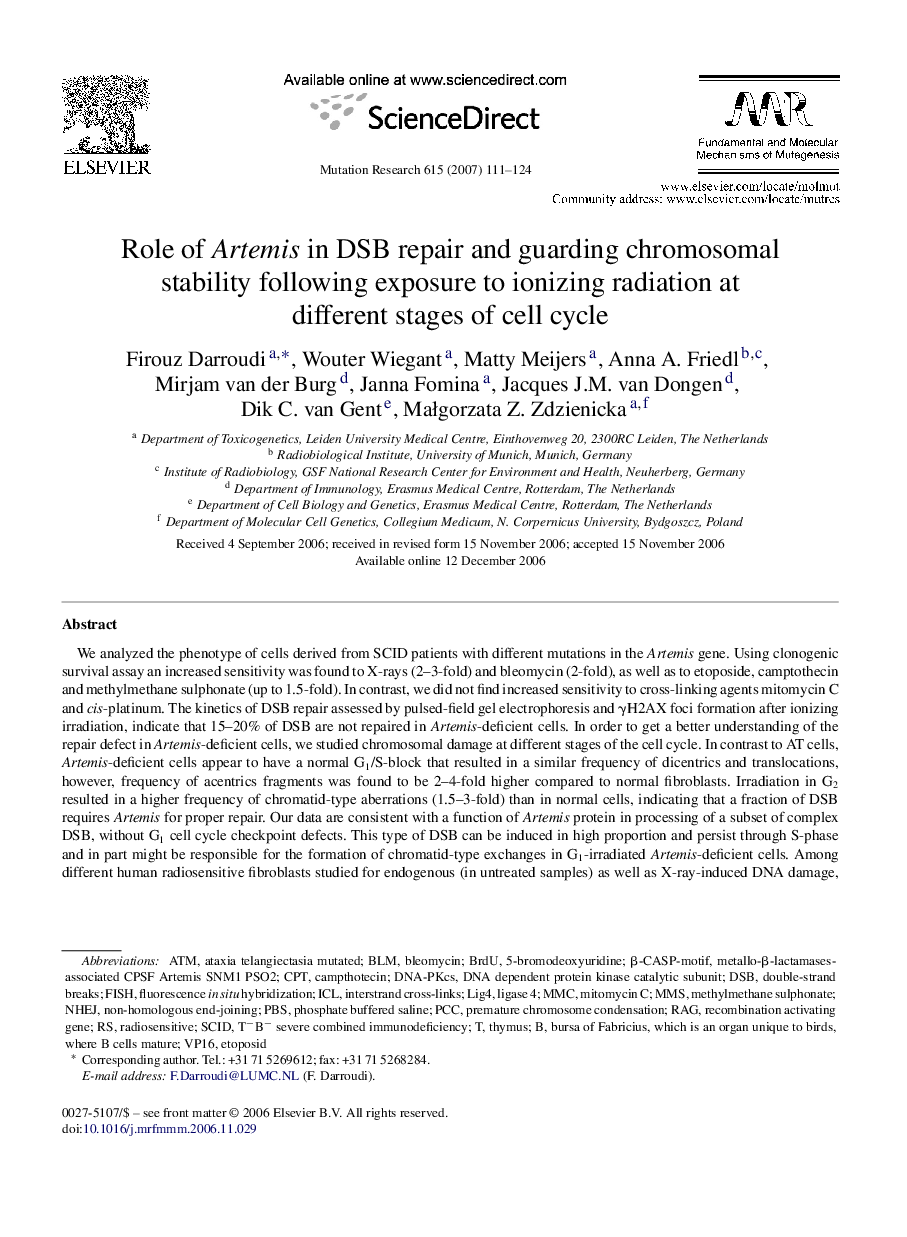| Article ID | Journal | Published Year | Pages | File Type |
|---|---|---|---|---|
| 2147518 | Mutation Research/Fundamental and Molecular Mechanisms of Mutagenesis | 2007 | 14 Pages |
We analyzed the phenotype of cells derived from SCID patients with different mutations in the Artemis gene. Using clonogenic survival assay an increased sensitivity was found to X-rays (2–3-fold) and bleomycin (2-fold), as well as to etoposide, camptothecin and methylmethane sulphonate (up to 1.5-fold). In contrast, we did not find increased sensitivity to cross-linking agents mitomycin C and cis-platinum. The kinetics of DSB repair assessed by pulsed-field gel electrophoresis and γH2AX foci formation after ionizing irradiation, indicate that 15–20% of DSB are not repaired in Artemis-deficient cells. In order to get a better understanding of the repair defect in Artemis-deficient cells, we studied chromosomal damage at different stages of the cell cycle. In contrast to AT cells, Artemis-deficient cells appear to have a normal G1/S-block that resulted in a similar frequency of dicentrics and translocations, however, frequency of acentrics fragments was found to be 2–4-fold higher compared to normal fibroblasts. Irradiation in G2 resulted in a higher frequency of chromatid-type aberrations (1.5–3-fold) than in normal cells, indicating that a fraction of DSB requires Artemis for proper repair. Our data are consistent with a function of Artemis protein in processing of a subset of complex DSB, without G1 cell cycle checkpoint defects. This type of DSB can be induced in high proportion and persist through S-phase and in part might be responsible for the formation of chromatid-type exchanges in G1-irradiated Artemis-deficient cells. Among different human radiosensitive fibroblasts studied for endogenous (in untreated samples) as well as X-ray-induced DNA damage, the ranking order on the basis of higher incidence of spontaneously occurring chromosomal alterations and induced ones was: ligase 4 ≥ AT > Artemis. This observation implicates that in human fibroblasts following exposure to ionizing radiation a lower risk might be created when cells are devoid of endogenous damage.
